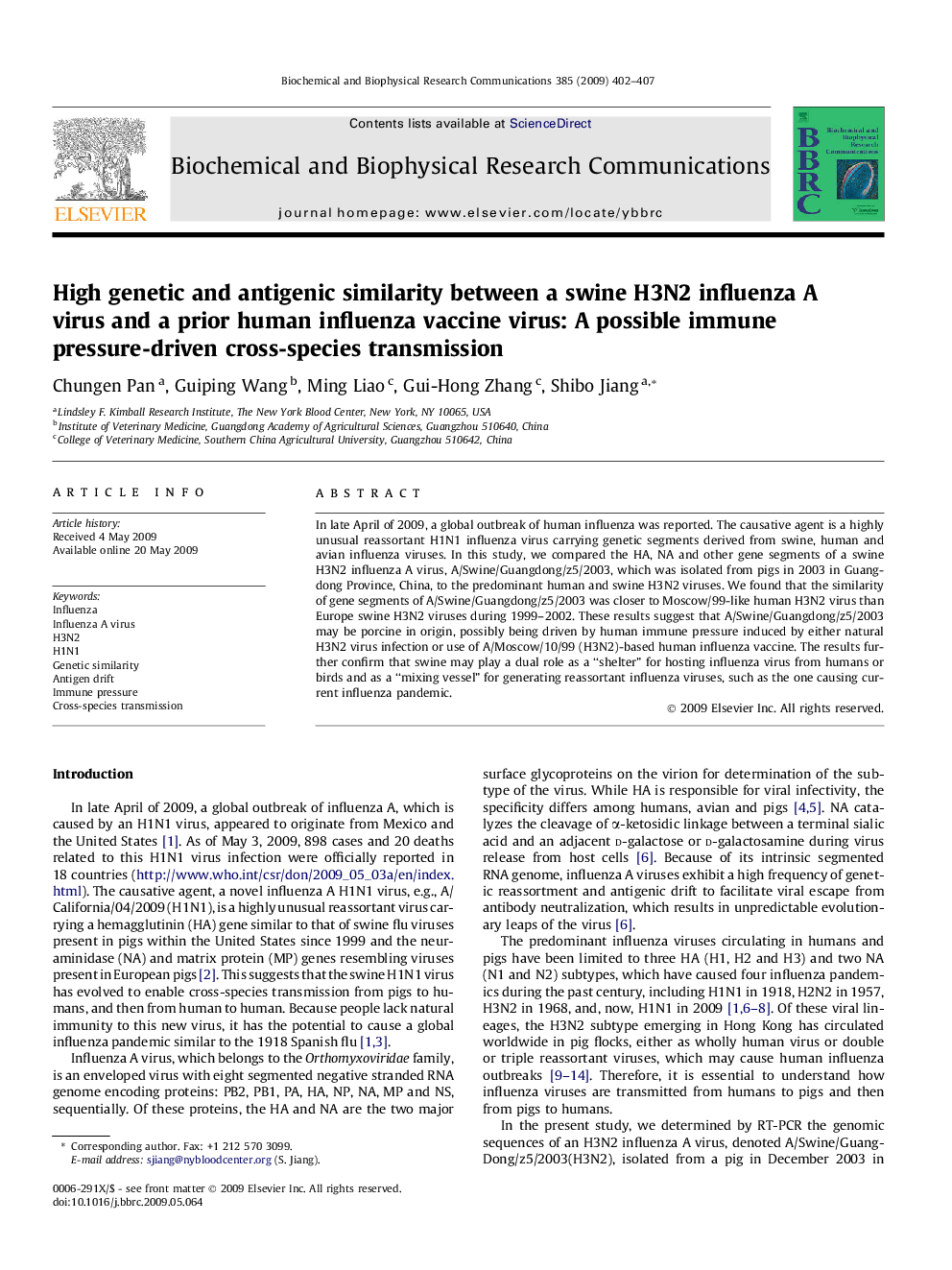| Article ID | Journal | Published Year | Pages | File Type |
|---|---|---|---|---|
| 10765896 | Biochemical and Biophysical Research Communications | 2009 | 6 Pages |
Abstract
In late April of 2009, a global outbreak of human influenza was reported. The causative agent is a highly unusual reassortant H1N1 influenza virus carrying genetic segments derived from swine, human and avian influenza viruses. In this study, we compared the HA, NA and other gene segments of a swine H3N2 influenza A virus, A/Swine/Guangdong/z5/2003, which was isolated from pigs in 2003 in Guangdong Province, China, to the predominant human and swine H3N2 viruses. We found that the similarity of gene segments of A/Swine/Guangdong/z5/2003 was closer to Moscow/99-like human H3N2 virus than Europe swine H3N2 viruses during 1999-2002. These results suggest that A/Swine/Guangdong/z5/2003 may be porcine in origin, possibly being driven by human immune pressure induced by either natural H3N2 virus infection or use of A/Moscow/10/99 (H3N2)-based human influenza vaccine. The results further confirm that swine may play a dual role as a “shelter” for hosting influenza virus from humans or birds and as a “mixing vessel” for generating reassortant influenza viruses, such as the one causing current influenza pandemic.
Keywords
Related Topics
Life Sciences
Biochemistry, Genetics and Molecular Biology
Biochemistry
Authors
Chungen Pan, Guiping Wang, Ming Liao, Gui-Hong Zhang, Shibo Jiang,
